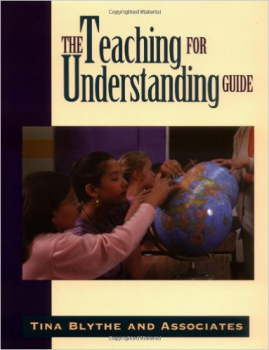- Who We Are
- Topics
- By Subject Area
- dummy
- By Level
- Projects
- Projects Column 1
- Agency by Design
- Aligned Programs for the 21st Century
- Artful Thinking
- Arts as Civic Commons
- Causal Learning Projects
- Center for Digital Thriving
- Citizen-Learners: A 21st Century Curriculum and Professional Development Framework
- Creando Comunidades de Indagación (Creating Communities of Inquiry)
- Creating Communities of Innovation
- Cultivating Creative & Civic Capacities
- Cultures of Thinking
- EcoLEARN Projects
- Educating with Digital Dilemmas
- Envisioning Innovation in Education
- Global Children
- Growing Up to Shape Our Place in the World
- Projects Column 2
- Higher Education in the 21st Century
- HipHopEX
- Humanities and the Liberal Arts Assessment (HULA)
- Idea Into Action
- Implementation of The Good Project Lesson Plans
- Inspiring Agents of Change
- Interdisciplinary & Global Studies
- Investigating Impacts of Educational Experiences
- JusticexDesign
- Leadership Education and Playful Pedagogy (LEaPP)
- Leading Learning that Matters
- Learning Innovations Laboratory
- Learning Outside-In
- Making Ethics Central to the College Experience
- Making Learning Visible
- Multiple Intelligences
- Navigating Workplace Changes
- Next Level Lab
- Projects Column 3
- Out of Eden Learn
- Pedagogy of Play
- Reimagining Digital Well-being
- Re-imagining Migration
- ROUNDS
- Signature Pedagogies in Global Education
- Talking With Artists Who Teach
- Teaching for Understanding
- The Good Project
- The Studio Thinking Project
- The World in DC
- Transformative Repair
- Visible Thinking
- Witness Tree: Ambassador for Life in a Changing Environment
- View All Projects
- Projects Column 1
- Resources
- Professional Development

The Teaching for Understanding Guide
PUBLISHED: 1998AUTHORS: Tina Blythe
Resource Summary
The Teaching for Understanding Guide: What does it mean to understand something? How do students develop understanding? How can teachers know how well they understand and support the development of understanding? Teaching for Understanding describes an approach to teaching that requires students to think, analyze, problem solve, and make meaning of what they have learned. Teaching for Understanding: Linking Research with Practice introduced the approach and the research that supports it. Now this companion workbook shows teachers how to use the four critical components of the Teaching for Understanding Framework.
Based on extensive research conducted by Project Zero and the Harvard Graduate School of Education, The Teaching for Understanding Guide offers teachers a practical way to apply the concepts of the Teaching for Understanding framework—both in the classroom and in curriculum planning. Using classroom examples from science, mathematics, language arts and social sciences, and reflecting the input of practicing teachers, the workbook shows how teachers can:
- Choose topics that engage student interest and connect readily to other subjects.
- Set coherent unit and course goals.
- Create activities that develop an demonstrate students' understanding.
- Improve student performance by providing continual feedback.
Brief case studies of teachers using this approach illustrate the process in action. Simple planning sheets and teaching units make this guide a useful resource for developing curriculum. Reflection sections at the end of each chapter suggest related activities, issues, and questions to facilitate further exploration of the chapter's ideas. The challenging process of rethinking classroom practice can lead to a new level of student understanding and learning. This how-to guide gives teachers the practical tools for making understanding more achievable in the classroom. ISBN-13: 978-0787909932



-
-
-
Support PZ's Reach